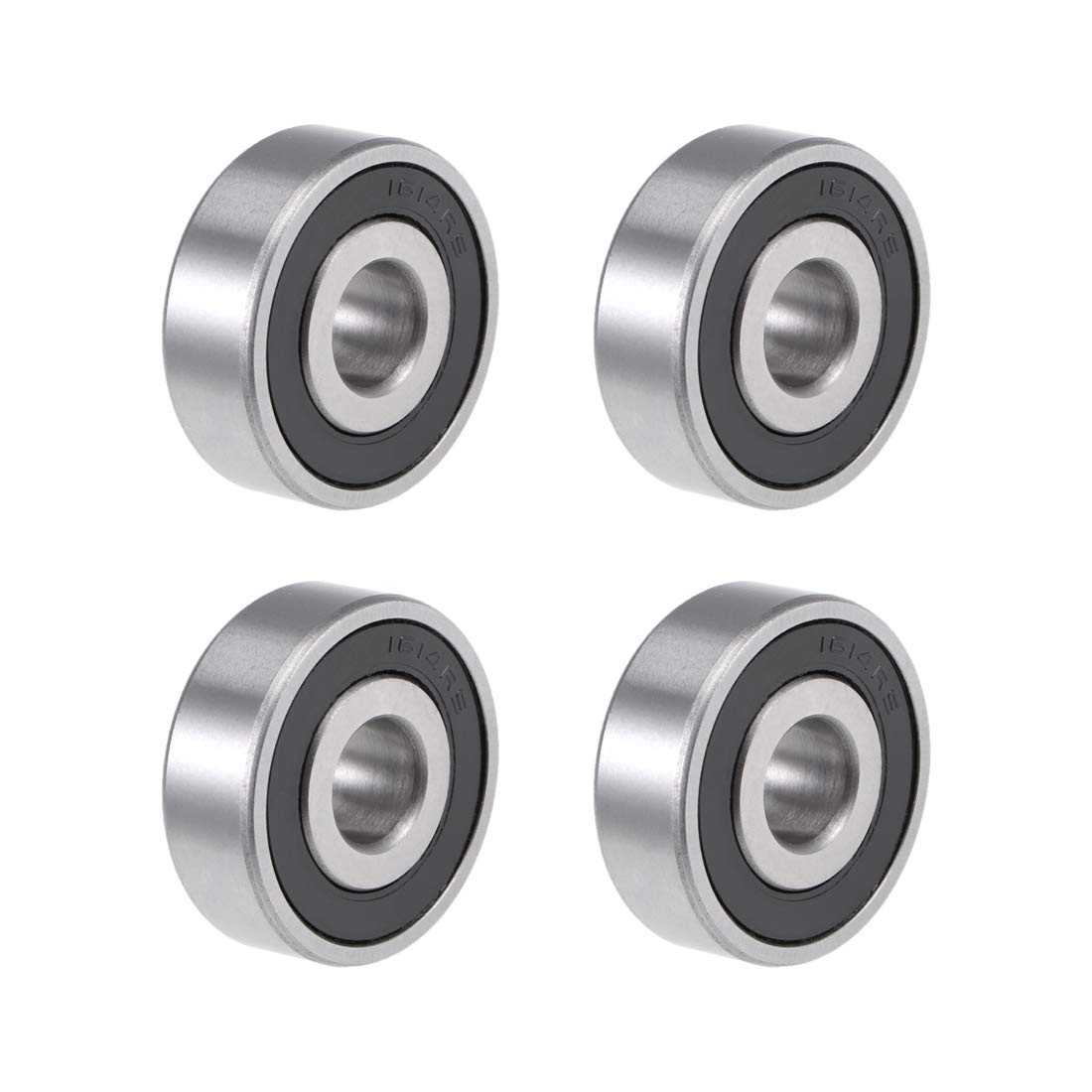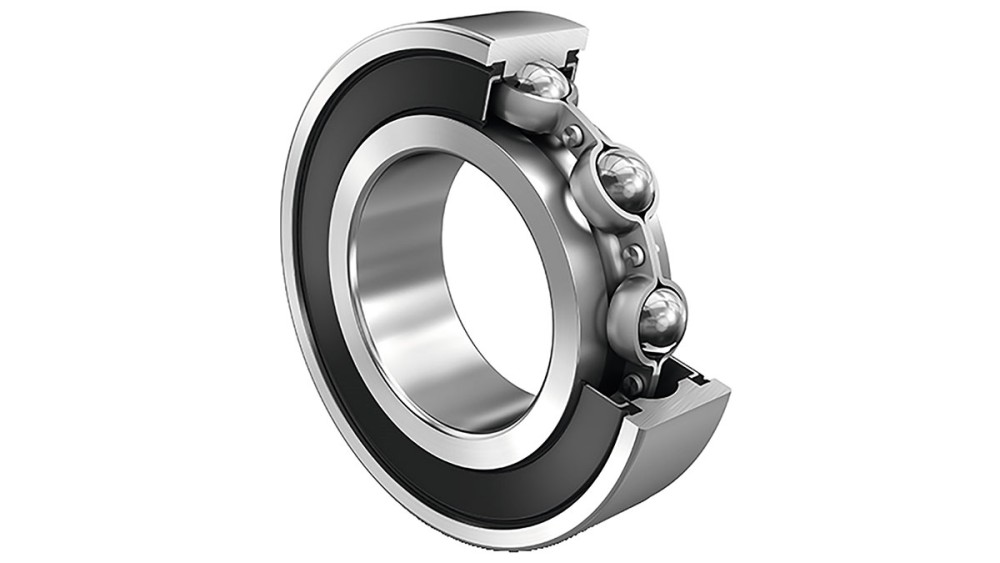How do deep groove ball bearings contribute to the smooth operation of electric motors?
Deep groove ball bearings play a crucial role in ensuring the smooth operation of electric motors. Their specific design features and capabilities contribute to the overall performance and efficiency of electric motors. Here’s a detailed explanation of how deep groove ball bearings contribute to the smooth operation of electric motors:
- Reduced Friction:
- Low Noise and Vibration:
- High-Speed Capability:
- Radial Load Support:
- Long Service Life:
- Versatility and Availability:
Deep groove ball bearings are designed to minimize friction between the rotating components of an electric motor. The smooth rolling motion of the steel balls within the deep raceway reduces frictional resistance, resulting in less energy loss and efficient power transmission. This leads to smoother operation and improved overall motor performance.
Deep groove ball bearings help dampen vibrations and reduce noise generation in electric motors. The precise alignment of the inner and outer rings, combined with the smooth rolling motion of the balls, minimizes vibrations that can cause noise. This results in quieter motor operation, which is particularly important in applications where noise reduction is desired, such as in household appliances or office equipment.
Electric motors often require high-speed rotation to achieve efficient performance. Deep groove ball bearings are designed to handle high rotational speeds, allowing electric motors to operate at their intended speeds without compromising performance or reliability. The smooth and continuous rolling motion of the balls within the deep raceway enables the motor to achieve and maintain high speeds with minimal friction and heat generation.
Deep groove ball bearings are capable of supporting both radial and axial loads. In electric motors, radial loads are common due to the weight and forces exerted on the rotating shaft. Deep groove ball bearings efficiently transmit and distribute these radial loads, providing support and stability to the motor’s rotating components. This ensures smooth and balanced operation, reducing the risk of premature wear or damage to the motor’s internal parts.
Deep groove ball bearings are designed for durability and long service life in electric motors. They are typically manufactured using high-quality materials and precision engineering techniques. This results in bearings that can withstand continuous operation, high-speed rotation, and various operating conditions without significant wear or performance degradation. The long service life of deep groove ball bearings contributes to the smooth and reliable operation of electric motors over extended periods.
Deep groove ball bearings are available in a wide range of sizes, configurations, and materials to suit different electric motor designs and applications. This versatility allows motor manufacturers to select the most appropriate bearing based on factors such as load requirements, speed capabilities, and operating conditions. The availability of deep groove ball bearings from numerous suppliers ensures easy sourcing and replacement options, further contributing to the smooth operation of electric motors.
In summary, deep groove ball bearings contribute to the smooth operation of electric motors through reduced friction, low noise and vibration levels, high-speed capability, effective support of radial loads, long service life, versatility, and availability. By incorporating deep groove ball bearings into electric motor designs, manufacturers can optimize performance, efficiency, and reliability, resulting in smooth and trouble-free motor operation in a wide range of applications.
What are deep groove ball bearings and how are they used in various applications?
Deep groove ball bearings are a type of rolling element bearing that are widely used in various applications due to their versatility and performance. Here’s a detailed explanation of deep groove ball bearings and their applications:
- Description and Design:
- Radial Load Handling:
- Axial Load Capability:
- Low-Friction Operation:
- Wide Range of Applications:
- Automotive: Deep groove ball bearings are used in various automotive components, such as wheel hubs, alternators, starters, air conditioning compressors, and electric power steering systems.
- Industrial Machinery: They are widely utilized in industrial machinery, including electric motors, pumps, fans, conveyors, machine tools, printing presses, and textile equipment.
- Home Appliances: Deep groove ball bearings are found in appliances like washing machines, refrigerators, dishwashers, vacuum cleaners, and power tools.
- Electronics and Office Equipment: They are used in computer disk drives, printers, copiers, scanners, and other electronic and office equipment.
- Sports Equipment: Deep groove ball bearings are employed in applications like skateboards, bicycles, fitness equipment, and fishing reels.
Deep groove ball bearings consist of an inner ring, an outer ring, a cage, and a set of steel balls. The inner and outer rings have deep raceway grooves that enable the bearings to accommodate both radial and axial loads. The presence of the steel balls between the rings allows for smooth and low-friction rotation. Deep groove ball bearings are typically made of high-quality bearing steel and are available in various sizes and configurations to suit different applications.
Deep groove ball bearings excel at handling radial loads, which are forces perpendicular to the shaft. The deep raceway grooves distribute the load evenly along the rolling elements, enabling the bearings to support high radial loads. This makes them suitable for applications where the primary load is predominantly radial, such as electric motors, pumps, gearboxes, and conveyor systems.
While deep groove ball bearings are primarily designed for radial loads, they can also handle limited axial loads, which are forces parallel to the shaft. The presence of the steel balls allows for some axial load transmission. However, it’s important to note that the axial load capacity of deep groove ball bearings is lower compared to dedicated thrust bearings. Therefore, they are typically used in applications with moderate axial loads or in combination with other bearing types to support both radial and axial loads.
Deep groove ball bearings offer low-friction operation, thanks to the rolling contact between the steel balls and the raceway grooves. This reduces energy losses due to friction and enhances the overall efficiency of the system. The low-friction characteristics make deep groove ball bearings suitable for applications that require smooth and quiet operation, such as household appliances, automotive components, and precision machinery.
Deep groove ball bearings find applications in a wide range of industries and equipment, including:
In summary, deep groove ball bearings are versatile bearings that can handle radial loads and limited axial loads. They offer low-friction operation and are used in a wide range of applications across industries such as automotive, industrial machinery, home appliances, electronics, and sports equipment.
Can you provide insights into recent advancements in deep groove ball bearing technology?
Recent years have seen several advancements in deep groove ball bearing technology, driven by the constant pursuit of improved performance, durability, and efficiency. These advancements have been made possible through innovations in materials, manufacturing processes, and design techniques. Here are some insights into the recent advancements in deep groove ball bearing technology:
- Advanced Materials:
- Surface Engineering and Coatings:
- Improved Manufacturing Processes:
- Design Optimization:
- Sealing and Lubrication:
- Sensor Integration:
New materials and alloys have been developed to enhance the performance of deep groove ball bearings. For example, the use of high-performance steels and ceramics has gained popularity. These materials offer enhanced strength, corrosion resistance, and high-temperature capabilities, allowing deep groove ball bearings to operate in demanding environments with improved reliability and longevity.
Advancements in surface engineering and coatings have contributed to the performance of deep groove ball bearings. Innovative coating technologies such as diamond-like carbon (DLC) coatings and various nano-coatings can reduce friction, improve wear resistance, and enhance the overall efficiency of bearings. These coatings also provide protection against contaminants and extend the bearing’s operating life.
Manufacturing techniques have been refined to achieve higher precision and quality in deep groove ball bearings. Advanced machining processes, such as precision grinding and superfinishing, enable tighter tolerances and smoother surface finishes. This results in improved bearing performance, reduced noise levels, and enhanced operational efficiency.
Design optimization has played a significant role in recent advancements in deep groove ball bearing technology. Computer-aided design (CAD) and finite element analysis (FEA) tools have enabled engineers to optimize bearing geometries, load distribution, and cage designs. These advancements have led to improved load-carrying capacity, reduced friction, and enhanced overall performance of deep groove ball bearings.
Advancements in sealing and lubrication technologies have improved the reliability and maintenance requirements of deep groove ball bearings. Effective sealing mechanisms, such as contact seals or non-contact seals, provide better protection against contamination and moisture ingress, extending the bearing’s service life. Additionally, advancements in lubrication techniques, such as the use of advanced greases and solid lubricants, enhance the bearing’s efficiency and reduce friction.
Integration of sensors within deep groove ball bearings has emerged as a recent advancement. These sensors can monitor various parameters, such as temperature, vibration, and load, providing real-time data on bearing health and performance. This enables proactive maintenance and condition monitoring, allowing for timely interventions and preventing potential failures.
In summary, recent advancements in deep groove ball bearing technology have focused on the development of advanced materials, surface engineering and coatings, improved manufacturing processes, design optimization, sealing and lubrication techniques, as well as sensor integration. These advancements have resulted in deep groove ball bearings with enhanced performance, durability, and efficiency. As a result, industries across various sectors can benefit from these advancements, experiencing improved reliability, reduced maintenance, and optimized operational performance.
editor by CX 2024-05-08



